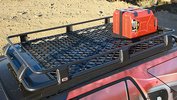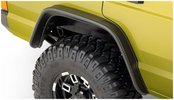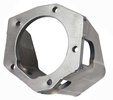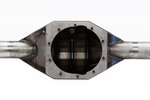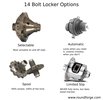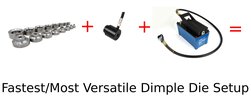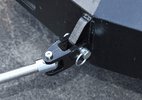How to Release a Jammed Ratchet Strap
Ratchet straps are super-handy, but can also be a little tricky to use.
They can get stuck or jam if you don't know how to use them.
So:
We'll take a look at the top 3 ways ratchet straps jam and how to make a ratchet strap release.
- How To Use a Ratchet Strap
- Not disengaging the ratchet all the way : The gear stays locked in place until you "unlock" it.
- Winding too much strap on the spool: This requires a little muscle and finesse to unjam.
- Needs a little lube: Happens with ratchet straps that don't work smoothly from being outside.
- It can be hard to make the ratchet strap tight, so your load won't be secure.
- You might not be able to lock it, which means it could release during transport.
- The excess straps will push on the auto pawl, which means it may only partially engage.
How Ratchet Straps Jam and Get Stuck
We've had ratchet straps jam or just get stuck for 3 reasons:
So here's how to deal with these problems:
1) Ratchet Strap Isn't Fully Disengaged and Won't Release
This is probably the most common problem that most people have.
When the ratchet is fully "closed" it's locked into place and both pawls are engaged. When it's partially open both pawls are mostly engaged.
You need to get the ratchet fully open in order for it to release. You do this by disengaging the two pawls.
First you need to squeeze the little handle to disengage the manual pawl:
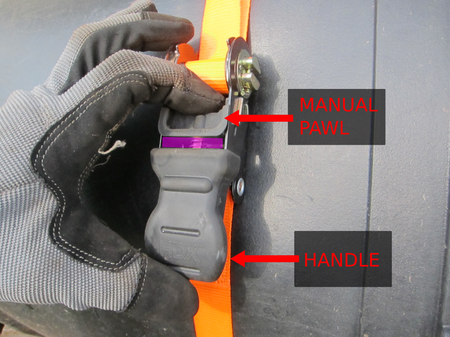
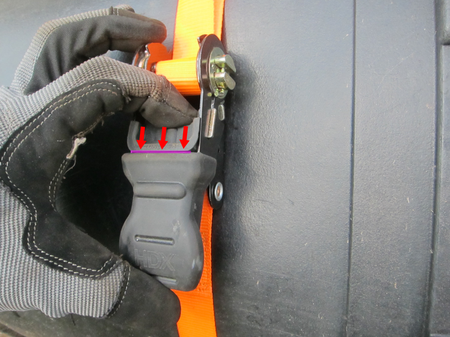
Get ready to squeeze the manual pawl.
This is the first part of unlocking the ratchet strap.
Then, still squeezing the little handle, you need to swing the main handle all the way up. Keep pushing up and squeezing the handle until the ratchet is flat.
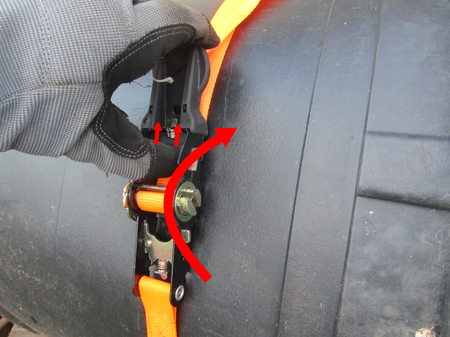
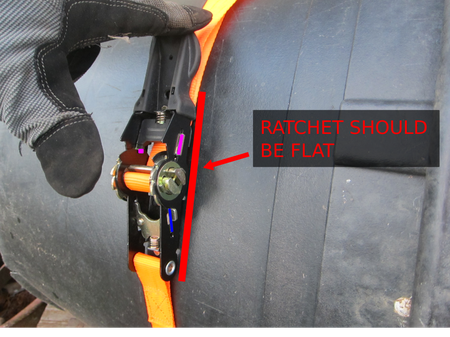
Continue to squeeze the manual pawl, and swing the bar up as far as possible.
Make sure that you make the two halves nearly flat! When properly positioned, you won't be able to pull the handle back down - it will be locked in its flat position.
Once it's flat, you can let go of the little handle and just pull the ratchet towards you - it'll now be loose and ready to release.
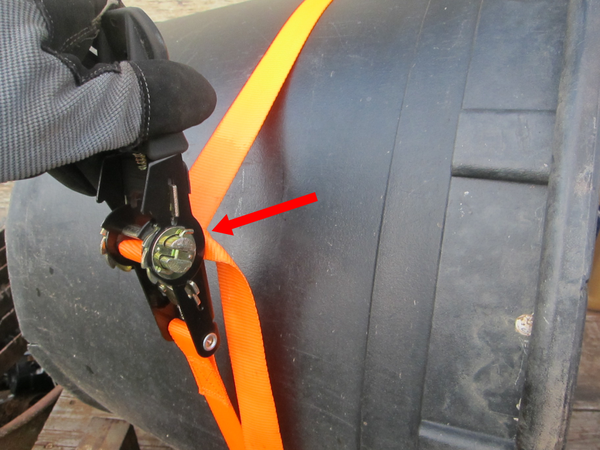
Pull the ratchet strap towards you.
2) Ratchet Strap Has Too Much Strap On the Spool
If you don't take the slack out of the ratchet strap before tightening it, you can have this problem. Compare the pink area in the below pictures:
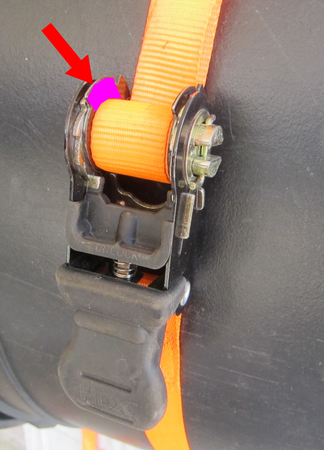
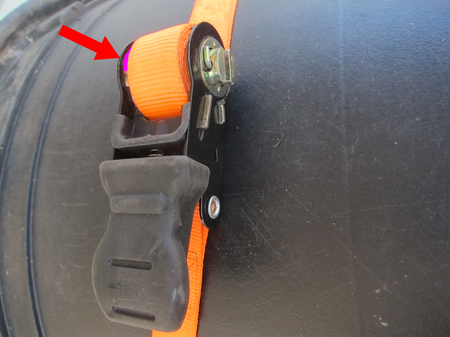
If you take most of the slack out of the strap before tightening (by pulling the loose, unhooked end), you'll get the right amount of strap on the spool.
This has way to much strap wound on it! This can prevent your strap from becoming tight enough and prevent it from securely locking for travel!!!
Notice how much strap is spooled in each image - one has a little and the other has a lot! The image with a lot of pink is a ratchet strap with the right amount of strap. The image with a small amount of pink is overloaded.
The overloaded ratchet strap spool is actually dangerous.
Why?
Dangerous!!!
The trick to unjam the strap here is with muscle. You need to follow the first procedure above for disengaging the ratchet, then pull really hard to make the strap unwind from the spool.
3) Ratchet Strap Has Rust or Dirt Making It Jam
Some of the old ratchet straps we have are pretty dirty and rusty. Occasionally, the pawls will stick which makes it hard to tighten or loosen the strap.
Essentially, the pawls should move into place from the pressure exerted by their springs, but the pawls sometimes can't slide in their respective channels.
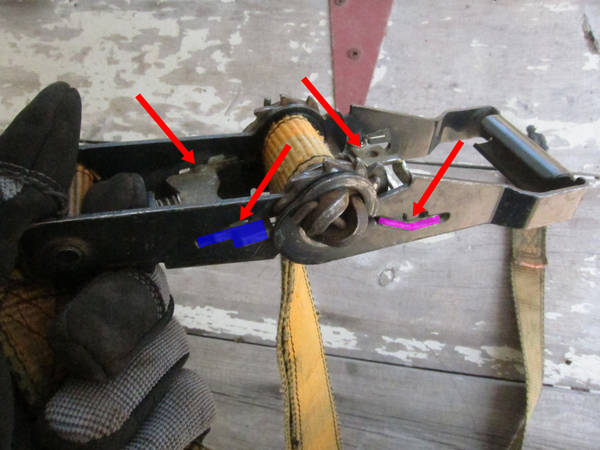
If your ratchet strap is sticking, it might be because the manual pawl (pink) and auto pawl (blue) can't move. Try lubing them with a little WD40, motor oil, cooking oil, or some other lubricant that will loosen them.
To fix this, you just need to squirt some lube or cleaner onto the pawl surfaces where they contact the ratchet strap body and move them back-and-forth by hand a little bit to loosen them up.
If the mechanism still sticks and you can't make it work, you might want to think about a new ratchet strap so that you'll have something that works when it's supposed to.
Last updated: September 5, 2019
